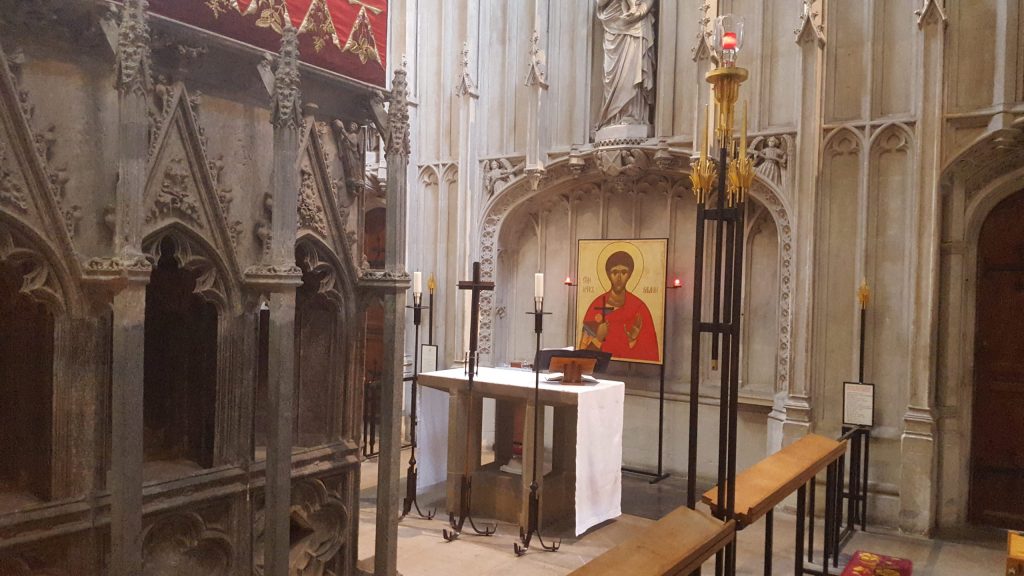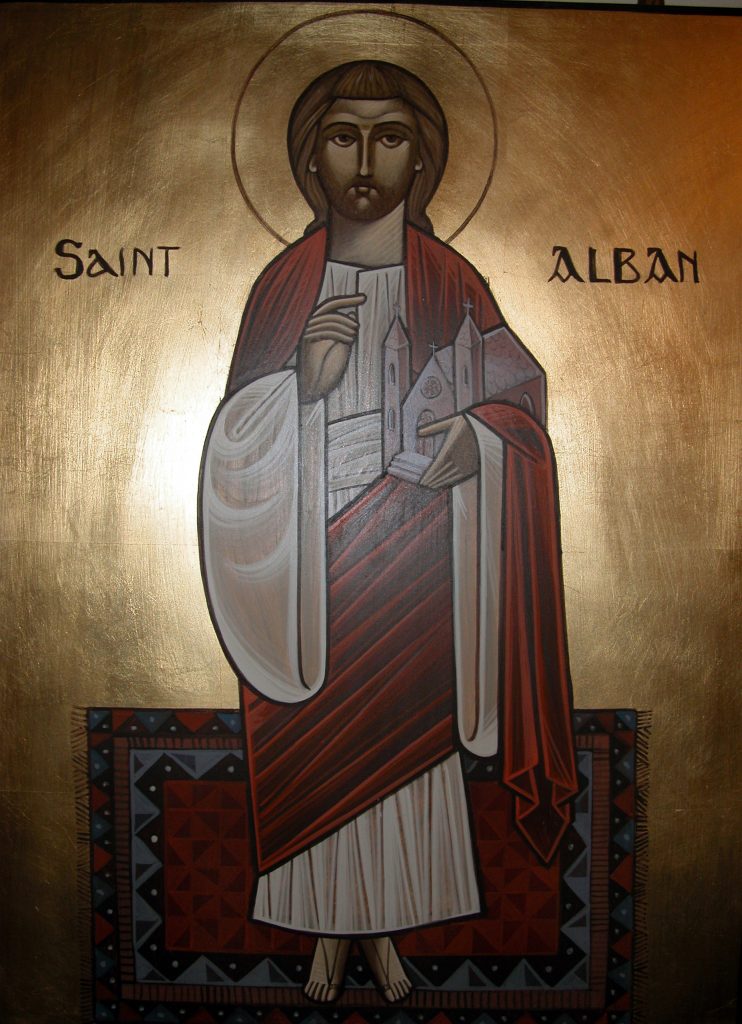
d. 3rd century
Places: St Albans, England. Verulamium
Alban was the first Christian to be put to death for his faith in Roman Britain and is therefore the proto-martyr of the British Isles. He was a Roman soldier in the town of Verulamium and a pagan. During one of the periods of persecution of Christians, perhaps between 250 and 309 A.D., Alban chose to give shelter to a Christian priest who was fleeing from persecution. He watched how the priest gave himself up to days and nights of prayer, and inspired by God, he began to be instructed in the faith himself, until he was fully convinced and sincerely became a Christian.
It came to the ears of the local Governor that Alban was hiding a Christian, and soldiers were sent to arrest the priest. But Alban dressed himself in the clothes the priest usually wore and presented himself to the guards. The Governor was furious when he saw that Alban had been brought before him, and he promised that Alban would suffer the same fate which the Christian priest would have received if he did not offer incense to the gods immediately.

Alban confessed himself to be a Christian, and without fear he refused to obey the command to offer to the gods. The Governor asked him what family he belonged to, perhaps hoping to persuade him. But Alban replied, “I am now a Christian, and employ my time in the practice of Christian duties.” “What is your name?” said the Governor, “Tell me immediately.” “I am called Alban by my parents,” he replied, “and ever worship and adore the true and living God, who created all things.”
The Governor ordered him to be whipped, and he bore this with patience and joy. Then, seeing this had no effect on him, he was sentenced to be beheaded. He was led out of the city, and so many of the citizens followed that the bridge which crossed a fast-flowing stream was made impassible by the crowd. But Alban, standing at the side of the stream lifted up his heart to God and in answer to his prayers the stream dried up and he was able to cross with the soldiers taking him to the place of execution.

The one who was to execute him saw this miracle and throwing down his sword he prostrated himself before Alban, saying that he would not take the life of a holy man and would rather die with him. All of those others who had taken him to the place of execution hesitated to pick up the sword and be responsible for his death. The place of execution was upon a hill, and after he had crossed the dry stream-bed the waters flowed as before. At the top of the hill he asked God for water to drink, and a spring of water rose at his feet.
There he was beheaded, together with the solider who had refused to commit the wicked deed. The one who took up the sword in the end, and martyred Alban, found himself blind ever afterwards. The soldier had not yet been able to be baptised, but his own blood was received as the waters of baptism, according to the teaching of the Church.

Alban was buried at the place of his martyrdom, and it was immediately a place of pilgrimage. When Germanus, a bishop in Gaul, visited Britain in about 430 A.D. and “visited the shrine of the blessed martyr Alban, to give thanks to God through him.” A church had been built over his tomb when Christianity was granted official freedom in the Roman Empire, and Bede says, “in which place there cease not to this day the miraculous cures of many sick persons, and the frequent working of wonders.”
The shrine was a place of pilgrimage until 1539 when the Abbey was closed, and the shrine was completely destroyed. It was reconstructed in 1990, after many of the broken pieces were discovered in 1872 during renovations in the Cathedral. Within the shire are relics of Alban which have been acquired or presented in recent times. Below the town of St Albans are the remains of Verulamium which is situated across the stream that Alban crossed on the way to his martyrdom.

One Response to "100 British Saints – #1 – Alban"